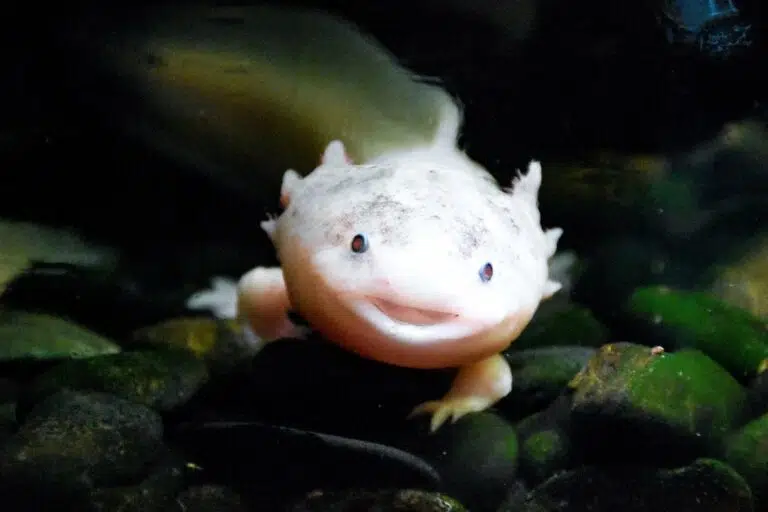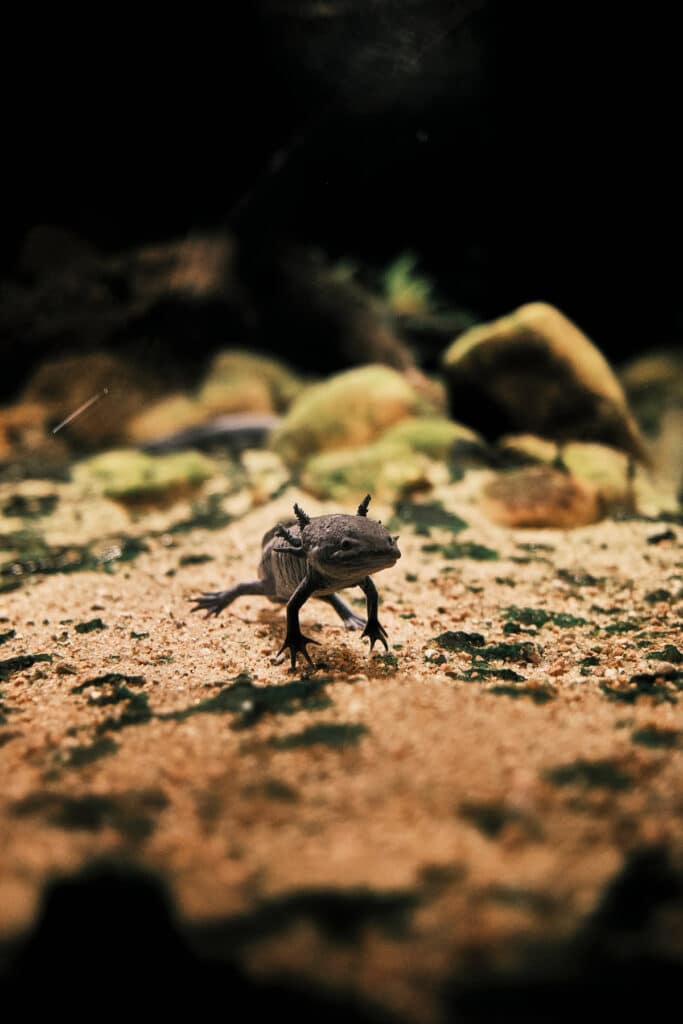ANIMALS
8 Axolotl Facts That Make You Realize Just How Unique These Amphibians Are

WORDS: David Thomas PHOTOGRAPHY Supplied
The Mexican axolotl is possibly one of the most interesting animals on Earth.
Named after the dog-headed Aztec god of fire and lightning, Xolotl (it’s a whole story), these aquatic salamanders have grabbed human attention since time immemorial with their striking looks and strange lifestyle.
Originally both revered and consumed by the Mexica/Aztecs in their capital of Tenochtitlán, the species experienced a rise to stardom when intrigued European naturalists brought some back to Paris in the 1800’s. They were quickly bred and became incredibly popular pets, a status that has been going strong to this day.
Interest in the axolotl has only grown in modern times, especially as scientists continue to learn more about the many extraordinary features that make this amphibian so very unique.
So if you’d like to learn more about this incredible animal, and why it’s so important, read more!
- They Stay Young Their Whole Lives
One of the traits the axolotl is most famous for is their seeming agelessness.
While other amphibians go through several distinct stages as they grow and develop, axolotls are unique in that they remain in their juvenile, aquatic form for their whole lives – a phenomenon referred to as ‘neoteny’ in biology.
In essence, they stay in their youthful ‘prime’ for their entire natural lives – lives that are remarkably long for their relative size (upwards of 20 years, in fact)!
Interestingly, scientists are able to ‘force’ axolotls to undergo metamorphosis into their ‘adult’ form with the right hormone treatments. These artificial adults look a lot like regular salamanders, and lose many of the unique abilities they’re known for.
- They Have Incredibly Regenerative Abilities
Axolotl’s other most well-known feature, and arguably their most famous within the scientific world, is their incredible regenerative abilities.
These amphibians are capable of healing from pretty much anything, including the regrowing of missing limbs and organs, repairing of spinal cord injuries, and even regenerating portions of their hearts and brains – all without any scarring!
This biological superpower has made the axolotl the go-to model for studying regeneration and research into regenerative medicine – the often-called “Holy Grail” of medical science, as it could completely change how we humans deal with injuries and trauma.
- They’re Extremely Resistant to Cancer
With such long lifespans and extraordinary regeneration, you would expect cancer to be a serious concern for the axolotl.
But incredibly, they actually seem to suffer from it far less than many other animals – studies suggest that axolotls are over a thousand times more resistant to cancer than mammals!
While the mechanism(s) behind this ability are still not fully understood, much like their regenerative abilities, scientists are working hard to unravel this mystery in hopes what we find can help humanity in our fight against cancer.
- They Have an Incredibly Complex Genome
In our efforts to understand the axolotl’s seemingly supernatural survival abilities, we have come to find another unique facet of their biology: their genome.
A genome is the collection of all the genetic instructions that tell our bodies how to grow and function, and in axolotls this list of genes is absolutely massive.
With about 32 billion base pairs – compared to human’s measly 3 billion – the axolotl has the 2nd largest and most complex genome of any animal we’ve sequenced so far (only being beaten recently by the Australian lungfish’s 43 billion).
Who knows what secrets are hidden in this enormous biological archive?
- They’re Surprisingly Intelligent
While it’s true that amphibians are not particularly well-known for their intelligence, axolotls manage to stay unique in that regard as well!
Axolotls have shown to be able to recognize shapes and other animals from a distance (despite their poor eyesight), and can learn to recognize their owners as well as when it is feeding time.
Some studies even suggest that axolotls have the ability to count up to at least 3, a cognitive feat that most would not expect from a salamander!
- They’re One of the Most Popular Pets in the World
With all of these incredible features (and probably a little bit of their adorable looks), it’s no wonder that axolotls have become one of the most popular pets in the world!
They are charming, fascinating, long-lived, and fairly easy to care for – making them an excellent choice for exotic pet novices and experts alike.
While naturally a range of mottled black and brown colors, over the years of domestication breeders have created a wide range of different colors and patterns – called morphs – for interested buyers.
- They Only Have 1 Natural Habitat on Earth
Speaking of natural, you may or may not be surprised to learn that such as unique species can only be found in the wild in 1 particular area in the world: mountainous freshwater lakes in central Mexico.
Specifically, Lake Xochimilco and some of the canals of Mexico City.
Wild axolotls used to inhabit many of the high-altitude lakes and wetlands within the Valley of Mexico, and were once thriving throughout the area, but human construction and water drainage has left these environments as polluted, swampy remnants no longer capable of supporting them.
- They Are Critically Endangered
The unfortunate paradox of the axolotl is that while the species is thriving in captivity, it is at the same time nearly extinct in the wild.
Overhunting, pollution, severe loss of habitat, and human-introduced invasive species have absolutely ravaged the native axolotl populations, reducing a once plentiful apex predator to a dangerously low number anywhere from 50 to 1000 individuals left.
While several conservation efforts have been made, there is sadly little evidence that the population decline has been reversed, and the future is uncertain for these amazing creatures.
Summary
The axolotl is a fascinating animal with many unique traits that sets it apart from other amphibians.
Apart from retaining their juvenile features their whole natural lives (effectively biological ‘eternal youth’), their astounding regenerative abilities, incredible resistance to cancer, and super complex genome makes them an important model organism for groundbreaking scientific and medical research.
They’re just as, if not more so, well-known to the public as popular pets. Hardy, intelligent, and definitely adorable, they can be found in pet shops and homes all over the world.
Unfortunately, and rather ironically, the same can not be said for axolotls in the wild.
Native exclusively to the freshwater lakes and swamps of the Valley of Mexico, these amphibians face an extreme threat of extinction in their natural environment after centuries of habitat loss and human interference.
Hopefully in the future these amazing animals can be saved in their natural habitat, but to do that, we must learn to appreciate just how unique and irreplaceable the axolotl is.









